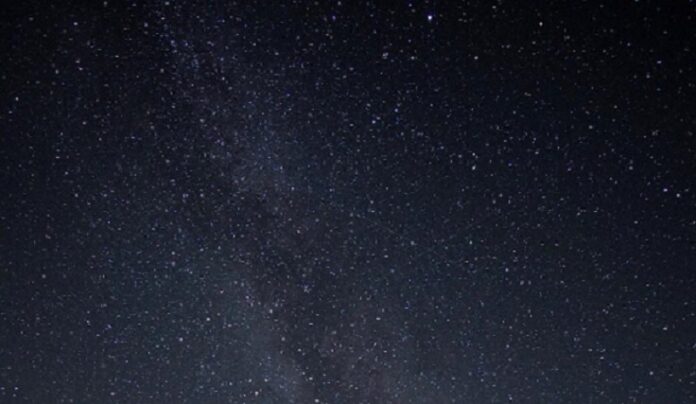Observation of 26 cm radio signals, formed due to hyperfine transition of cosmic hydrogen offer an alternative tool to the study of early univers. As for neutral epoch of the infant univers when no light was emitted, 26 cm lines are perhaps only window. However, these redshifted radio signals emitted by cosmic hydrogen in the early univers are extremely feeble and have been elusive so far. In 2018, EDGE experiment reported detection of 26 cm signals but the findings could not be independently confirmed. The main issue was instrument systematic and contamination with the other signals from the sky. The REACH Experiment is to employ unique methodology to overcome the bottleneck. It is hoped that this research group will reliably be able to detect these elusive signals in near future. If successful, REACH Experiment may bring ‘26 cm radio astronomy’ to the forefront in the study of early univers and help us much in unravelling the mysteries of early univers.
When it comes to the study of universi i hershëm, name of recently launched Teleskopi Hapësinor James Webb (JWST) pops up in our mind. JWST, a successor of hugely successful Gungëz telescope, is a hapësirë-based, infrared observatory equipped to capture optical/infrared signals from the early stars and galaxies formed in the Univers soon after the Big Bang1. Megjithatë, JWST has some limitation so far as picking up signals from the neutral epoch of universi i hershëm është e shqetësuar.
Table: Epochs in the history of univers since the Big Bang

(Burimi: Filozofia e Kozmologjisë – sfond 21 cm. E disponueshme në http://philosophy-of-cosmology.ox.ac.uk/images/21-cm-background.jpg)
Up to 380 k years after the big bang, the univers was filled with ionised gas and was fully opaque. Between 380k – 400 million years, the univers had become neutral and transparent. The epoch of reionisation started after this phase starting 400 million after the big bang.
During the neutral epoch of early univers, kur univers was filled with neutral gases and was transparent, no optical signal was emitted (hence called dark age). Unionized material does not emit light. This poses a challenge in study of early Univers of neutral epoch. However, microwave radiation of 21 cm wavelength (corresponding to 1420 MHz) emitted by the cold, neutral cosmic hydrogen during this epoch as a result of hyperfine transition (from parallel spin to more stable anti-parallel spin) offers opportunities to researchers. This 21 cm microwave radiation would be redshifted upon reaching Earth and will be observed at 200MHz to 10 MHz frequencies as radio waves2,3.
radio astronomi 21 cm: Observation of 21-centimeter cosmic hydrogen signals offers an alternative approach to the study of early univers especially of neutral epoch phase that was devoid of any light emission. This can also inform us about new physics such as distribution of matter over time, dark energy, dark matter, neutrino masses, and inflation2.
However, the 21-cm signals emitted by the cosmic hydrogen during early univers phase is elusive. It is expected to be extremely weak (about one hundred thousand times weaker than other radio signals also emanating from the sky). As a result, this approach is still in infancy.
Në vitin 2018, studiuesit kishin raportuar zbulimin e një sinjali të tillë radio në një frekuencë prej 78 MHz, profili i të cilit ishte kryesisht në përputhje me pritshmëritë për sinjalin 21 centimetra të emetuar nga hidrogjeni kozmik primordial.4. Por ky zbulim i sinjalit radio primordial 21 cm nuk mund të konfirmohej në mënyrë të pavarur, kështu që besueshmëria e eksperimentit nuk mund të vërtetohej deri më tani. Çështja kryesore duket të jetë kontaminimi me sinjalet e radios në plan të parë.
Pika e fundit është raporti i Radio Eksperimentit për Analizën e Hidrogjenit Kozmik (REACH) më 21 korrik 2022. REACH do të përdorë një qasje të re eksperimentale për të zbuluar këto sinjale të dobëta radio kozmike të pakapshme, duke ofruar kështu një shpresë të re për konfirmimin e sinjaleve kozmike 21 centimetra.
Eksperimenti i Radios për Analizën e Hidrogjenit Kozmik (REACH) është një eksperiment mesatarisht 21 cm në qiell. Kjo synon të përmirësojë vëzhgimet duke menaxhuar çështjet me të cilat përballen instrumentet që lidhen me sinjalet sistematike të mbetura në të dhëna. Ai fokusohet në zbulimin dhe shpjegimin e përbashkët të sistematikës së bashku me planin e parë dhe sinjalin kozmologjik duke përdorur statistikat Bayesian. Eksperimenti përfshin vëzhgime të njëkohshme me dy antena të ndryshme, një sistem me brez ultra të gjerë (vargu i zhvendosjes së kuqe rreth 7.5 në 28) dhe një kalibrator marrës bazuar në matjet në terren.
This development is significant given its potential to be one of the best tools (and cost effective too vis-a-vis hapësirë-based observatories like James Webb) for study of early univers as well as possibility of ushering in of new fundamental physics.
***
Referencat:
- Prasad U., 2021. Teleskopi Hapësinor James Webb (JWST): Observatori i parë hapësinor i dedikuar studimit të universit të hershëm. Shkencore Evropiane. Postuar më 6 nëntor 2021. Në dispozicion në http://scientificeuropean.co.uk/sciences/space/james-webb-space-telescope-jwst-the-first-space-observatory-dedicated-to-the-study-of-early-universe/
- Pritchard JA dhe Loeb A., 2012. Kozmologjia 21 cm në shekullin e 21-të. Raporte mbi progresin në fizikë 75 086901. Në dispozicion në https://iopscience.iop.org/article/10.1088/0034-4885/75/8/086901. Paraprintimi në arXiv në dispozicion në https://arxiv.org/abs/1109.6012 version pdf https://arxiv.org/pdf/1109.6012.pdf
- Universiteti i Oksfordit. Filozofia e Kozmologjisë – sfond 21 cm. Në dispozicion në http://philosophy-of-cosmology.ox.ac.uk/21cm-background.html
- Bowman, J., Rogers, A., Monsalve, R. et al. Një profil absorbimi i përqendruar në 78 megahertz në spektrin mesatar të qiellit. Nature 555, 67–70 (2018). https://doi.org/10.1038/nature25792
- de Lera Acedo, E., de Villiers, DIL, Razavi-Ghods, N. et al. Radiometri REACH për zbulimin e sinjalit të hidrogjenit 21 cm nga zhvendosja e kuqe z ≈ 7.5-28. Nat Astron (2022). https://doi.org/10.1038/s41550-022-01709-9
- Eloy de Lera Acedo 2022. Zbulimi i mistereve të Universit foshnjor me radiometrin REACH. E disponueshme në internet në https://astronomycommunity.nature.com/posts/u
***






































